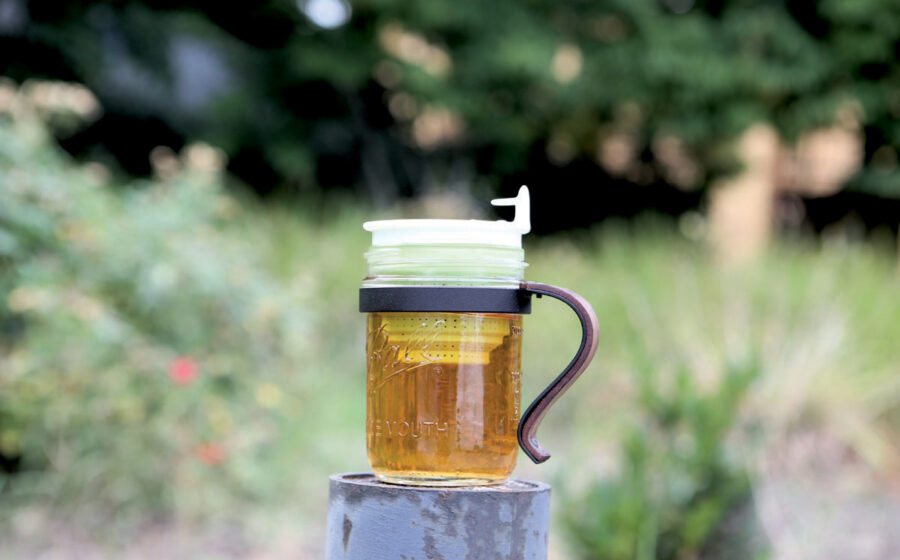[A] couple weeks ago, Bethany Hargrove and Megan O’Connell ran Fresh Cup’s readers through the basics of brewing coffee outside. They offered advice on packing your brew kit, detailed which devices work where, and above all encouraged exploration.
The same things that are enjoyable about a hot cup of coffee in the woods—it’s soul-soothing, to say the least—are also true of tea. For advice on scenic steeping, we went to outdoor tea enthusiast and The Tea Spot owner Maria Uspenski, who was drawn to the simplicity of cold tea brewing while cycling Ride the Rockies, a week-long tour de Colorado, and enjoys brewing tea hot and cold when hiking and camping.
Maria says, “In many ways, I prefer brewing outdoors, because in fresh and clear air, you often get a different sensation of the flavor profile of the tea.”
Q: Is tea brewing easier or more difficult outdoors?
A: Tea brewing is easy regardless of where you are. Hot water, great tea leaves, and timing are all you need.
Q: What kind of equipment is needed?
A: A handy little hi-powered stove for black teas or an insulated Zojirushi tumbler, if you’re looking to make green tea, are the only special pieces you’ll need. I am a stickler, and do bring a ceramic cup or mug to brew in and drink from. And I do always carry one of my Tuffy Tea Steepers for brewing on the road.
Q: What about a timer?
A: That’s a real treat when you’re outdoors and have nothing but your brew to focus on. At home, I use a kettle that reads out the temperature, but when I’m making water for tea on the trail, I use the traditional Chinese method for getting my water to the right temp. You look for “fish eyes” for green teas (the first bubbles from nucleation sites forming on the bottom of your pan), “strings of pearls” for oolong teas (when these nucleation sites start to send up columns of bubbles, like champagne), and roaring brook (full boil) for black teas and Pu-erhs. As far as timing goes, I prefer to hike without a watch or a digital timer. I watch the tea leaves unfurl, and use my nose to decide when the steep is perfect—a luxury which is surely available anytime and indoors, but one which I rarely find the time for when making tea for myself or others at work or at home.
Q: Can fancier tea work outdoors?
A: Sometimes I miss drinking from finer china. Sounds so picky, but for me, the cup totally affects the flavor of hot tea. And you can bring beautiful quality smaller ceramic cups or bowls that won’t easily break while camping or hiking. I do aspire to have a tailgating party at the Santa Fe Opera with beautiful china someday!
Q: What kind of brewing is best for what scenario?
A: I haven’t gotten away from drinking black teas in the morning, so I do need a stove to get that first cup of the day steeped up. With a jet-boil though, I have boiling water as quickly as I do in my electric kettle at home. Nothing is like a fresh cup of black tea, and I love something a little bit smoky, like Russian caravan, in the outdoor morning.
Once you have your boiling water going for the morning cup, you can fill a thermos for a mid-day cup of green tea. Mid-afternoon, I prefer a cold brew, to rehydrate and give me the last boost of energy for whatever trek we’re on.
Q: What about teas that don’t need hot water?
A: I’m cold brewing hibiscus tea, green teas, and white teas all the time. My colleagues love to cold brew yerba mate, but for me, the caffeine kick from mate isn’t the best. I prefer to get my endurance push from green tea, especially roasted green teas. Teas can be cold-brewed overnight in mason jars and steeped in the morning; it’s the easiest thing in the world.
—Regan Crisp is Fresh Cup’s associate editor. Photo by Cory Eldridge.
















